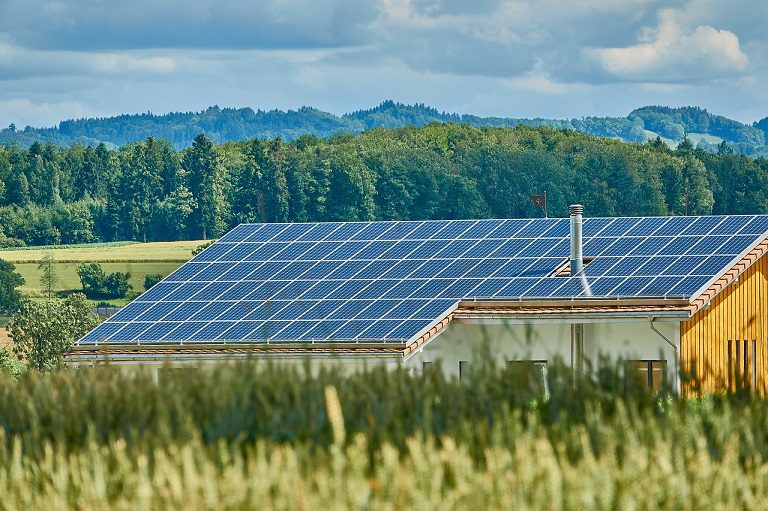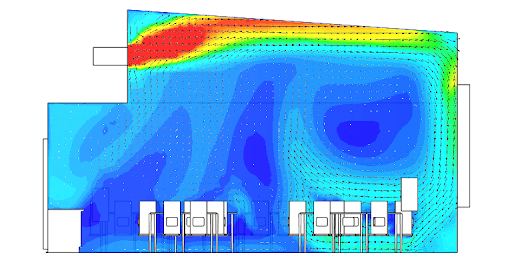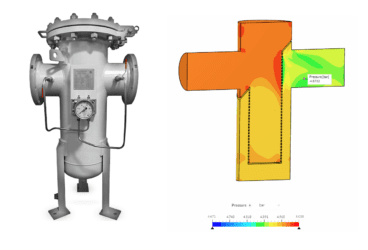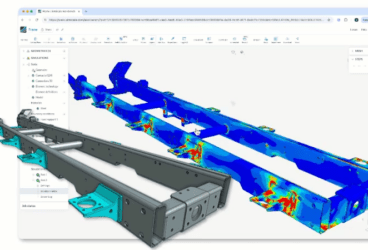There was a time when sustainability was regarded as an additional consideration in a business strategy, perhaps to lower operating costs or gain a reputational advantage. But today, sustainability is at the helm, driving architecture and engineering. With government commitments for a low-carbon future, regulations will ensure that net zero building design starts to dominate planning and construction in the smart built environment era. In this article, we will take a look at the guiding principles behind net-zero design, and explore how cloud-based CAE enables environmental engineering solutions to drive down energy consumption and reduce climate impact.
Simulate and Adapt Cities for Climate Resilience:
A World Cities Day Event
What Is a Net Zero Building?
Though the exact definition might vary slightly depending on where you live, all net zero buildings, sometimes referred to as zero-energy buildings or NZEB (net zero energy buildings), adhere to the principle of producing the same amount of energy that it consumes, offsetting its energy demand entirely. This is approached from both a supply and demand equation. Net zero buildings seek to generate their own power supply via renewable energy sources, like solar, wind, and hydroelectric means, among others. Simultaneously, they lower the overall demand for power by utilizing energy-efficient solutions in various aspects of the building design, including HVAC, insulation, and lighting. While net zero building designs will differ in their approach to balancing the strategies of energy conservation versus energy harvesting, the fundamental principle of meeting their own energy demands remains at the core.

What Are Net Zero Building Certifications?
Internationally adopted rating systems have transformed sustainable architecture from a design choice into a guiding principle. The front runners in establishing building standards for lowering greenhouse gas emissions are LEED and BREEAM, which comprehensively assess a building’s sustainability, energy and water use, waste management, and more.
More recently, LEED Zero and BREEAM In-Use escalate building standards further to certify for net-zero operational performance for carbon and resources. Passivhaus (or Passive House) certification focuses on minimal energy consumption for heating, cooling, and maintaining indoor air quality. Global adoption of these environmental certification systems has led to the development of new rating systems at a regional level, able to tie a building’s operational performance and impact even closer to its specific, local climate and ecology.

How To Design a Net Zero Building
There is no one correct path on the journey to creating a net zero building. Though strategies to achieve the ultimate goal of carbon neutrality differ, there is a constant emphasis on getting design right, within the early phases of the overall sustainable building design process. The Energy Policy Pyramid, developed as a tool for decision-makers in the built environment, illustrates five levels of strategies available for reducing energy consumption, with the most cost-effective at the base of the pyramid. Despite an understandable inclination to try and mitigate energy demand through fuel substitution, like renewable resources, the greatest potential for reducing energy needs (and cost) lies within the design phase.
In the design stage, techniques like energy modeling and simulation can be used in determining heating and cooling strategies based on environmental factors, building orientation, lighting systems and capacities, HVAC strategies, and more. Designers and engineers can also conduct building life-cycle analyses and test designs based on occupancy levels. A thorough design stage represents the best chance for mitigating against ‘lost opportunities’ to maximize energy efficiency, which may be impossible to retroactively achieve in later stages.
With the best design decisions validated, there are a number of measures for uncovering opportunities for increased energy efficiency. Capitalizing on advancing technology that continues to improve the energy efficiency of various operating systems or appliances within buildings, designers can move closer towards their net zero objectives. Another consideration when designing net zero buildings is fuel source. Green-certified buildings seek out energy supplies from resources that offer a reduced climate impact such as photovoltaic roof panels for solar energy or low carbon heat.
Taking a building’s lighting system as an example we can see that the first stage of design would consider the largest number of factors. Not only determining the levels of light required based on the building’s purpose (a classroom versus a warehouse, for example) but also examining solar orientation, overhangs, awnings, shades, and vegetation that might impact the need for natural daylight vs. electric lighting. Simulation and modeling in the design steps allow for establishing the optimal design to trade-off maximal natural light while mitigating heat gains. The following stage, which seeks to lessen demand through energy-efficient solutions, would involve selecting lighting options that require the least energy while still upholding performance requirements. LED performance outpaces almost all lighting options while consuming up to 80% less energy. Finally, designers of net zero buildings are asked to consider the source that will supply energy to a lighting system. With an emphasis on renewable resources, the LEDs in this example can be powered with electricity derived from solar panels.
How Can Cloud-Based Simulation Drive Sustainable Design?
Building simulation software tools have advanced to meet the needs of architects and engineers working to understand the complex relationship between net zero buildings, their dynamic energy needs, and a changing climate. Sustainable building design requires a set of powerful tools to optimize strategies for energy and carbon reduction. Cloud-based simulation software, like SimScale, eliminates the need for outdated on-premises hardware, and grants full access to high-fidelity engineering for architects and designers, no matter their location or time zone. World-renowned architecture firm Zaha Hadid Architects use SimScale in the early stages of their design process to evaluate climate impacts on their sustainable building projects.
Cloud-computing also unleashes collaboration capabilities on projects to improve multi-step workflows requiring time-intensive hand-offs and large file sharing, to instead follow a simpler method using a single, shared dashboard. And, no project is too large. Global engineering consultancy Mott MacDonald uses cloud-based simulation to engineer innovative solutions for sustainable buildings and large structures, like stadiums, airports, and subway stations. API integration capabilities even allow designers to link simulation software with different design tools, capturing more building physics, and creating a more complete picture of building performance. Through the API, users of simulation software can create applications customized to their building design process.
Offloading high-performance computing capabilities to the cloud grants designers access to powerful simulation solvers, regardless of their current computer capacities. Cloud-based simulation boosts accuracy while shortening the time spent in the design stage, ultimately testing for and validating the best design decision for net zero buildings in a quicker time frame.
Speed is of the essence when it comes to embracing sustainable design architecture as the new standard and creating net zero buildings. According to PwC’s 2020 Net Zero Economy Index, global efforts to decarbonize must occur at a rate five times greater than in the previous year in order to keep track with global warming limits. Cloud-based simulation gets your team collaborating and iterating quickly so that sustainable design choices can be made earlier in the process and faster than ever before.
To learn more about net zero energy buildings, explore SimScale’s additional resources on cloud-based tools for sustainable design:
- Sustainable Design With SimScale
- Simulation for Sustainable Architecture
- Environmental Design for Building the Future
- Simulate 2050: How to Achieve a Net-Zero Built Environment
- Designing Passivhaus Buildings with CFD


